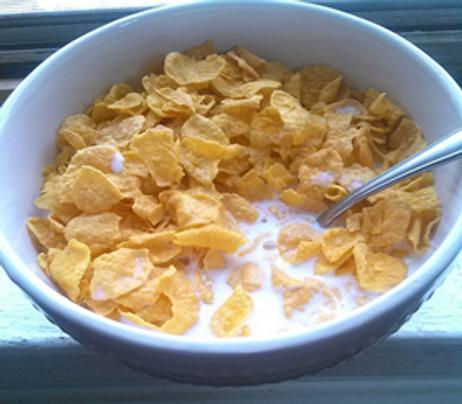Most parents would agree that breakfast is essential to a successful school day. The majority have applauded schools' efforts to supply breakfast to children who wouldn't get a morning meal otherwise. However, questions have been raised about the quality of the meals offered, leading some districts to change their breakfast menus.
Going Healthy in D.C.
According to the , D.C. schools will be among the first to stop offering sugar-laden cereals and flavored milk in their cafeterias. The milk will change during the summer term, and the schools hope to open their new school year, offering healthier cereal choices to students. DCPS spokeswoman Jennifer Calloway told the Post that the system's "goal for this upcoming school year is to serve cereals with six grams of sugar or less."
Calloway added that the district would be taste-testing a variety of low-sugar alternatives to determine the selections that would be healthy and tantalizing to students' taste buds. According to , the district was notorious for offering sugary selections like Apple Jacks, Raisin Bran, and Pop-Tarts, in addition to flavored milk that contains nearly as much sugar as a can of soda. When kids combine the flavored milk with other sugar-packed selections, they might start their day with as much as 60 grams or 15 teaspoons of sugar – before school begins!
The school district recently hired former restaurateur Jeffrey Mills as Director of Food Services for D.C. Public Schools in hopes of improving the quality and the nutritional content of the food served to students daily. Mills promises several healthy changes to the cafeteria menu by the time the students return to school in August.
This video outlines the issue with sugary foods.
Changes on the Horizon in Chicago
Chicago Public Schools have recently moved to open their breakfast program to most students in their system, much to the delight of parents and educators in the area. However, as more parents and nutrition experts are tuning into the fare offered through the Chicago schools, the delight is quickly turning to concern over the types of foods children consume daily, according to a on WGN News.
One of the most significant items in contention is the "MVP Breakfast," which consists of a fortified doughnut. Former football star Franco Harris created the concept, and many cafeteria staff members are hesitant to call this round pastry with a hole what it is. However, nutritionists know a doughnut when they see one, and they are protesting their presence in the Chicago school system. The doughnuts and other sweet fare like sugary cereals and syrupy waffles are offered daily.
School administrators argue that healthy selections are offered along with sugar-laden treats and that children get to choose up to three breakfast items daily. However, opponents of the menu say that kids will opt for doughnuts and waffles over eggs and fruit any day, so most children will not get the nutrition they need to get them through the morning until lunchtime arrives.
The Chicago Public Schools argue that their food choices fall within USDA standards. However, the USDA is the first to admit that the current guidelines are outdated and has commissioned the Institutes of Medicine to review the standards and make necessary revisions. Many hope the revisions will rule out some of the processed food selections now offered in Chicago Public Schools – like the doughnuts currently going by another title.
This video offers another take on the sugary foods issue.
Making Good Choices
Part of the problem is the new food labeling campaign, Smart Choices, which has added many sugar-laden cereals to its list. According to a report in the New York Times, government agencies and many nutrition experts are concerned with the criteria used for this new system. The USDA has provided a list of healthy cereal options as an alternative. The list was designed to help schools make healthy purchasing choices and help students make good food choices.
While schools are making changes, they expect students to refuse healthy options at first, but they are confident that students will accept the new fare once they realize no other options are available. In a country where obesity is running rampant, even among the youth, any changes toward more nutritious, lower-calorie eating would be welcomed by the health community today.
Questions? Contact us on Facebook. @publicschoolreview











